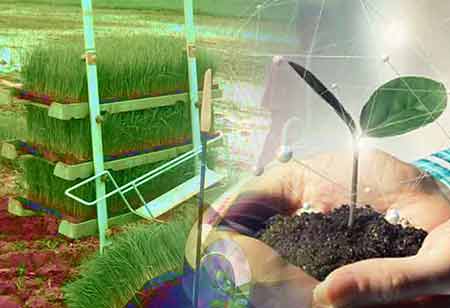Thank you for Subscribing to Agri Business Review Weekly Brief
How is Big Data Beneficial for Indoor Farming
Precision sensors gather data at several touchpoints throughout the growth. For instance, sensors that measure water moisture content gather information on the substrate of crops.

By
Agri Business Review | Monday, August 01, 2022
Stay ahead of the industry with exclusive feature stories on the top companies, expert insights and the latest news delivered straight to your inbox. Subscribe today.
Big data significantly impacts every business, and indoor producers may now simplify their operations by implementing smart farm practices and strategies.
Fremont, CA: Although indoor farming has got practiced in greenhouses for millennia, it has recently gained fresh attention and appeal. The market for agriculture analytics is getting driven by advanced analytics to increase yields and cope with variability. Big data significantly impacts every business, and indoor producers may now simplify their operations by implementing smart farm practices and strategies. Let's examine how big data is altering how we develop.
How does indoor farming use big data?
Precision sensors gather data at several touchpoints throughout the growth. For instance, sensors that measure water moisture content gather information on the substrate of crops. An operating system that may generate actionable intelligence receives this data. When the water content drops below a set threshold, rules based on the data may cause automated software to feed the plants. Numerous components of indoor growing activities, including CO2, humidity levels, VPD, light intensity, EC, temperature, dewpoint, etc., are easy to monitor.
Big Data's advantages for indoor farming
Big data indoor farming offers several benefits over outdoor farming. Crops cultivated indoors are shielded from bad weather and have access to light cycles even when the sun isn't shining. Examples of crops that can survive in indoor growing operations include those generally cultivated in tropical climates, saving time and life expectancy during travel. Big data boosts benefits by boosting nutritional density while using less water, plant nutrients, and labor.
Checkout This : Top Cannabis Tech Solutions Companies
Big Data Basics
The increased strain to provide the world's growing food demand drives the agriculture analytics market's steady expansion. However, cannabis cultivars employ big data to increase their financial line to provide agriculture analytics solutions and services.
Many cannabis farmers are turning obtained data into valuable insights by using it. However, one must first gather data to evaluate it.
The rules engine continues to learn, anticipate, and adapt while the data is saved, usually in a cloud-based storage system. This is machine learning, which is yet another method farmers may benefit from the data they continuously get from their installed sensors. Farmers are encouraged by advanced analytics to constantly assess the effectiveness of their rules and test new optimizations to boost yields and improve workflow.
Cultivation businesses are increasingly adopting automation and technology to increase productivity and profitability. This is especially true for tasks that machines are well-suited for, such as fertilizer mixing and distribution, temperature control, and opening and closing vents.
The need for expensive labor will decline as algorithms develop, and producers will see higher agricultural yields. The key point is that the correct data-driven solution may increase ROI while reducing energy expenditures and waste.





